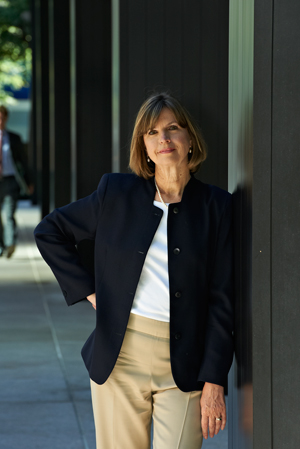
The emerging architects featured in this month's annual “Design Vanguard” (beginning on page 41) speak to that point. Their unique and varied designs reflect the search for self-expression. Yet many of these younger architects also exemplify new values. One of our chosen firms so resists the idea of a signature authorship that its partners have opted for total anonymity and call their Winnipeg office 5468796 Architecture, after their corporate identification number (we humbly suggest they switch to a more memorable numerical sequence). These iconoclastic Winnipeggers are part of another trend, too, toward architectural practice that is more collaborative and global. The founding partners mirror the diversity of contemporary Canada—both are émigrés, from Finland and Bosnia. Other Vanguard firms are similarly global in outlook and practice: Koji Tsutsui has an office in Tokyo and San Francisco and has worked in Africa and Haiti; Leong Leong, two brothers in practice in New York, have completed a project in Seoul. Like many of the other Vanguard architects, their work is propelled by a strong sense of place and of materials, with a high premium on sustainability.
Not surprisingly, these themes were echoed in architectural record's ninth annual Innovation conference, “Crossing Borders & Disciplines,” in New York last month (page 22). Keynote speaker Bjarke Ingels of BIG, which now has an office in New York as well as in Copenhagen, is proving himself to be one of the profession's wittiest and most inventive presenters (check out his talk at TEDxEast on YouTube). Besides showing such radical projects as the mixed-use 8 House (record, August 2011, page 44), Ingels preaches a message that sustainability should be “fun,” dismissing what he calls the Protestant ethic “that it has to hurt to be good.” Later, a panel on American architects working abroad—with A. Eugene Kohn of Kohn Pedersen Fox Associates, Thom Mayne of Morphosis, and Audrey Matlock, who has a 12-person office in New York—demonstrated that firms of all sizes can successfully compete for foreign projects. The panelists talked about the welcome opportunity to create innovative architecture for adventurous overseas clients, while damning the timidity of most American developers when it comes to taking design risks.
Yes, good design still matters (as Michael Speaks argues in Commentary, page 29). We applaud those designers who are continuing to be as inventive as possible—in their progessive ideas and in their built work, even when times are tough. “The crisis is not economic—the crisis is when you stop thinking,” said architect Michel Rojkind of Mexico City at the Innovation conference.
And great architecture, we know, doesn't have to be costly: We were pleased to hear that Record's November cover project, the St. Nicholas Eastern Orthodox Church in Arkansas, won the Civic and Community award at the World Architecture Festival in Barcelona. Made of corrugated metal, with a dome fashioned from an old satellite dish, this modest building by Marlon Blackwell Architect is a triumph of thoughtful invention—and just one more example of the power of personal expression.



Post a comment to this article
Report Abusive Comment